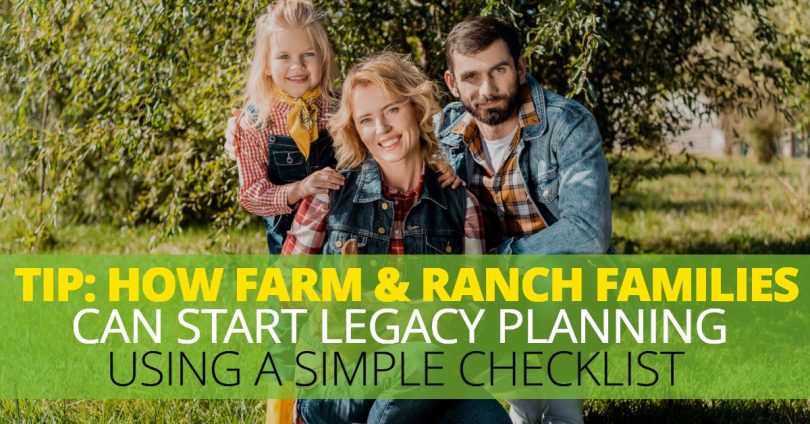An inheritance is more than money or property, especially when it comes to family farms, ranches and businesses. Many survive for multiple generations, says the Woodward News in the article “Plenty to consider in legacy planning,” but it takes planning.
Knowing that one day your grandchildren, and hopefully their children, will walk the land their great-grandparents did, and take the same satisfaction in knowing that the work they do, is a part of our country’s economy. Every family’s situation is different but one thing they all share in common, is that succession goals need to be evaluated critically, even though there is great emotion involved in passing on a legacy.
Dividing assets, sharing control and management decisions and transferring ownership are all things that must be examined and formalized as part of a succession plan.
For starters, determine the overall goal. Every family’s goals are different. Should assets be held for end-of-life-care for aging parents, passed on to children, donated to charity or are they needed to ensure the successful transition of the business to the next generation?
Got Questions… Just Click Here!People work hard their whole lives to accumulate assets, so it’s important to have a legacy plan. In this way, everything you’ve worked for is preserved for the next generation or available for your needs as you age.
In 2019, gift and estate tax exemptions are up dramatically, but strategic planning still needs to be done.
For farm families, the Farm Journal Legacy Project offers printable downloads, including a succession planning action guide, family meeting agenda, conversation starters and a goals clarification worksheet.
Family meetings will need to tackle some topics that may benefit from the presence of an estate planning attorney, who is experienced with family farms and succession planning.
- How will the transfer of property, including farm equipment, property, and livestock, be done with minimal taxes due?
- How can the non-farming members of the family receive their fair share of their inheritance, without taking away valuable resources needed to keep the farm or ranch going?
- What resources will be available for the older parents to live on, when they retire?
- Can the farm support multiple generations?
Succession planning that works best, begins long before the farm family is thinking about retirement. Determining roles and responsibilities and setting accountability for those roles must start happening long before the oldest generation steps away from the day-to-day operations of the farm or ranch.
Reference: Woodward News (Jan. 2, 2019) “Plenty to consider in legacy planning”







